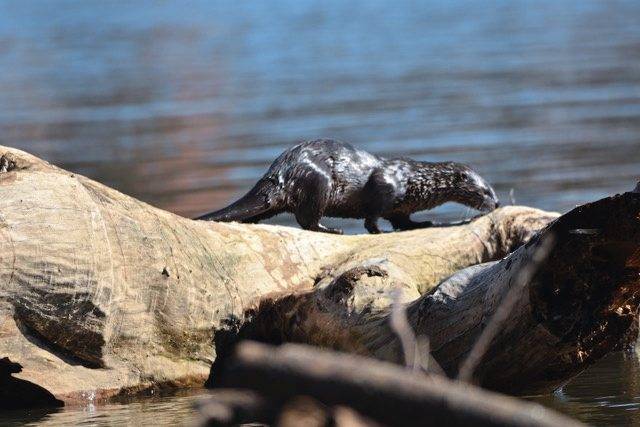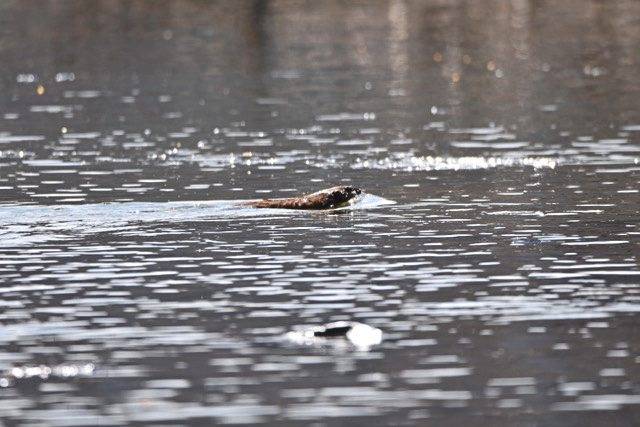Photographer captures images of river otter in Monongahela River
Lisa Kaufman had her camera set to capture some migrating Northern shoveler ducks on the Monongahela River recently, in Pittsburgh’s Duck Hollow neighborhood, when a movement near the bank caught her eye. She pointed her camera and for 19 seconds got to see a rarity: a river otter.
“This guy popped right up out of the water, climbed onto a log, poked his head up and looked around,” said Kaufman, 63, of Baldwin. Then he was gone.
“Seeing the otter, so strong and healthy-looking and just slipping up out of the river, was really breathtaking,” said Kaufman.
“The thought they are reestablishing a footing here is really cool and fun to see,” she said. “Their presence, along with the bald eagles along the river, says something about the general health of the region’s environment,” she said.
Kaufman’s photos were popular on social media, garnering comments such as, “Holy fish sticks!”
While river otters have growing populations throughout the state, sightings in the Monongahela and Allegheny rivers in Pittsburgh, are rare and usually fleeting, said Pennsylvania Game Commission officials.
Much like the once endangered bald eagle, the river otter disappeared from the region and much of the state. Otter populations plummeted prior to 1,900 due to pollution and overtrapping.
Since the animal was reintroduced in the state in the 1970s, their numbers have been increasing, according to the Pennsylvania Game Commission.
“They are doing OK in the Pittsburgh area with the possibility of seeing them anywhere in a major river,” said Aaron Facka, the furbearer biologist for the game commission.
“They tend to be more nocturnal, although not exclusively,” he said. “They are not like other animals in a high density area that you would see like deer and elk. We might have a family of three to four otters using a section of river that is four miles long and that is why you don’t see them,” Facka said.
There has been a family of river otters spotted frequently over the last three or four years at the confluence of the Youghiogheny and Monongahela rivers near McKeesport, said Douglas Bergman, a game warden with the Game Commission who covers parts of Allegheny County.
“The otters would come out and play near a marina there,” he said of the reports from boaters. “They are playful animals,” he said. “But they’re elusive and they don’t typically come out in front of people.”
Just like the three pairs of eagles in the area — two nesting along the Mon in Hays and West Mifflin and another pair on the Yough near McKeesport – if the food source wasn’t there, the otter wouldn’t there because it mainly a fish eater,” Bergman said. “This shows us that our water is clean enough to support a lot of wildlife.”
People mistake otters for beavers and other animals. Otters can grow to 3 feet in length, a size similar to a large beaver. Other animals in and near water such as muskrat and mink are half to one-third of the size of an otter or a beaver, Facka said. To clench identification, people need to see the tail, which on the otter is similar to a dog’s tail.
In places where there are healthy otter populations like the Clarion River, people have a good chance of seeing them, he said. Recently, a Butler-based photographer, Jake Dingel, captured video footage of a pair of otters playing in the snow along the Clarion River.
Remove the ads from your TribLIVE reading experience but still support the journalists who create the content with TribLIVE Ad-Free.



